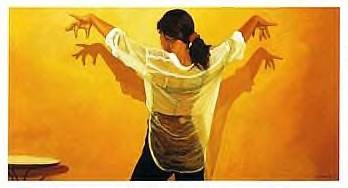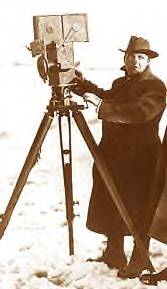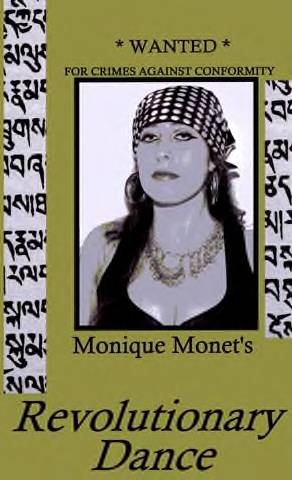|
|
 |
 |
|
Video Baladi
by Monique Monet |
 |
 |
|
(Originally published in Jareeda Magazine) |
 |
 |
|
I have seen the future of dance - - and it is video! For the vast majority of recorded history, dance was
the ethereal art. |
|
|
 |
 |
|
Paintings by the masters endured for centuries; a sculpture might entertain and inspire its
viewers for millennia; but |
|
 |
 |
|
until comparatively recently, a dancer's most beautiful, artistic and elegant creation enjoyed a life span of only moments. |
 |
 |
|
following decades Hollywood has offered us it's own interpretation of every conceivable sight and sound via the infinite realm of
motion picture production. |
 |
|
|
 |
 |
 |
|
But the true egalitarian revolution in motion pictures has only come about in the last few years. Of
course Hollywood can lavishly provide us with every fantasy and adventure conceivable. But Hollywood magic comes with a tremendous price tag: The worst kind of elitism. For all practical purposes, if you don't have
millions of dollars, you cannot express yourself through film. And therefore, for most of the last century, the vast majority of us have been required to accept the role of passive "watcher" while a tiny elite
minority enjoyed the privilege of expressing their ideas on film. But, as I said earlier, now comes the Revolution! With the recent advent of sophisticated video cameras and equally
sophisticated yet low cost editing bays, the average person has the opportunity to present their thoughts, experiences, or dance creations, through their own personal motion pictures. For the
first time, probably in the history of the universe, any motivated, dedicated individual can share their story or their art with the world. Without any trouble at all, most of us can already
name at least a dozen ways in which video has altered the world in which we live. And the world of dance is more effected by video than most other aspects of life. Middle Eastern Dance in
particular is experiencing huge changes. Thousand-year-old traditions are disappearing practically in a blink of an eye, simply because they don't work in our modern world anymore. |
 |
 |
|
Recently, in a magazine interview, one of the all-time superstars of Middle Eastern Dance,
Fifi Abdou said, "The dance is dead." She was referring to the waning popularity of traditional cabaret in the Middle East due to a symphony of factors too numerous to mention, but primarily
because the |
|
|
 |
 |
|
audience and venues that existed from the 1950's through the 70's are rapidly disappearing. |
 |
 |
|
But Fifi's bold and emphatic statement must be qualified. If she was speaking of dance as her future
opportunities for earning big money performing, on a regular basis, before a large and afflluent audience in the plush ballroom of a five-star hotel - - then that dance is most certainly dead.
That type of venue is a relic of the past. But does that mean that Fifi Abdou, and other big name dancers, are out of a job? No, of course not. But it does mean that they must broaden their
horizons in search of the venue of the future. And most of them have already discovered that the future rests solidly on a foundation of video production and distribution. The dance of Fifi
Abdou isn't dead - - quite the opposite, it has been immortalized within the coiled film of a video cassette. The future of dance is video - - and I, for one, am glad. Whatever we choose as
subject matter, video has given us the possibility of emancipating ourselves from the tyranny of Hollywood, by allowing us to affordably produce our own film creations. Also the new venue of
video allows me, and others like me, to more creatively express our dance art, free from the control of greedy club owners, and the conformance-demanding cliques of last generation's dancers.
As dancers, teachers, workshop presenters, artists, or social commentators, video has proved to be our liberation; putting creative freedom and opporturnity for self-expression literally at our fingertips. |
|
|
 |
 |
|
I've been very gratified by the warm reception my most recent production, Monique Monet's
Revolutionary Dance, has received, both here in the U.S.A. and overseas. For better and for worse, my film is definitely not a predictable, ultra-smooth Hollywood production. It is honest, vital, and
surprising. And I think it's also often insightful and humorous. |
|
 |
 |
|
Most of all, it's a chance for me to share with other dancers, other women. It's an attempt to comfort
those who feel they've been put down and humiliated by the dance establishment; to nourish a seed of |
 |
 |
|
creativity hidden deep in the heart of a sister dancer; to offer a warm and sincere welcome to all who have felt like outsiders.
Also I intended my film to be a kicking and biting attack against those who would attempt to hold us back from our true fulfillment by trying to convince us that we're not good enough (for any reason) to realize and
claim our heartfelt dreams. The huge corporations and millionaire moguls no longer have a monopoly on the medium of moving pictures. And club owners and dance cliques can no longer tell you
how, or if, you can present your dance art to the world. A new day is dawning. |
 |
 |
|
All rights reserved |
|

























